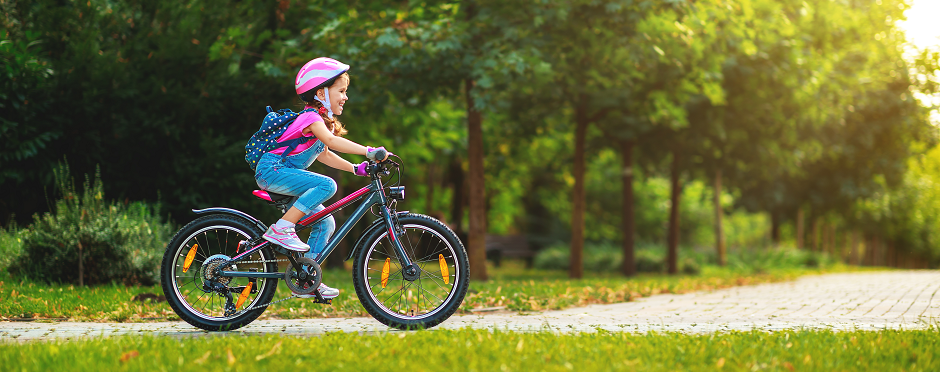
How to Encourage Your Kids to Be Fit
Leave a CommentPhysical fitness is a hot topic. Physical activity levels are commonly formed as habits early in life; not to say that you cannot change those habits at any point in your life. Parents may be concerned for their children’s present and future health if they are not a “typical athletic” child. Many children have interests outside of athletics, such as computers, music, reading or video games. Fitness is a general way to look at your overall health, longevity and quality of life.
The current national childhood obesity rate is 18.5 percent, and the percentage rises as children get older – with the rate for those aged 12-19 years old being 20.6 percent.1 In addition to combating obesity rates, physical fitness has been linked to decreased risk of chronic disease and a decreased risk of depression.2, 3 If we can instill a desire for physical fitness at a young age, we can set children up for a lifetime of overall better health and happiness.
Elementary Age Children
Even at young ages, children are able to identify what they like and dislike. Encourage young children to perform any physical activity that they enjoy. This can range from walking, riding a bike, swimming, sports, playing with the family dog, playing tag or having a dance party in the living room. At this age, activity should focus on the fun aspect rather than competition. In addition, these young children are easily influenced by their parents; if they see a parent staying active, they will be more likely to want to be active as well.
Middle School Age Children
During these middle years, children are becoming more aware of their own bodies and hormones are running rampant. At this age kids may start standing out for their athletic abilities and those that are less gifted are at risk of quitting their sport if they feel they aren’t as talented. Parents can again encourage fitness by focusing on the importance of being active rather than the competition.
In addition, these ages are where some kids begin to show more interest in “sedentary” activities such as video games, computers or academics. Parents should try to find ways to be encourage fitness using these interests; examples include video games that require movement like Wii sports or dance based games. Also, help children understand that activity can be performed in short bursts of 10-20 minutes throughout the day rather than all at once if they are hesitant to start.
High School Children
High school aged children are almost ready to embark out into the world where PE classes are no longer required. Kids this age are now old enough to take responsibility and initiative toward their own health goals. Parents should continue to encourage fitness for overall health rather than physical appearance or for competition purposes. Kids this age may also think they know what they like or don’t like based on past experiences. However, this is also a perfect time to try or retry activities they may have moved away from, such as swimming or riding a bike.
General Tips:
- Encourage activity for overall health rather than weight loss
- Focus on activities that are fun for the individual child
- Praise effort not performance or competition
- Kids learn habits by watching, therefore if they see you making an effort, they will be more likely to want to put effort toward fitness too
- Try to do family activities related to fitness: family bike rides, hiking or going for a walk
If you would like to learn more from an Athletico physical therapist, please use the button below to request an appointment.
The Athletico blog is an educational resource written by Athletico employees. Athletico bloggers are licensed professionals who abide by the code of ethics outlined by their respective professional associations. The content published in blog posts represents the opinion of the individual author based on their expertise and experience. The content provided in this blog is for informational purposes only, does not constitute medical advice and should not be relied on for making personal health decisions.
References:
1. “The State of Childhood Obesity.” The State of Obesity, www.stateofobesity.org/childhood/.
2. Richards J, Jiang X, Kelly P, Chau J, Bauman A, Ding D. Don’t worry, be happy: cross-sectional associations between physical activity and happiness in 15 European countries. BMC Public Health. 2015;15:53. doi:10.1186/s12889-015-1391-4.
3. Booth FW, Roberts CK, Laye MJ. Lack of exercise is a major cause of chronic diseases. Comprehensive Physiology. 2012;2(2):1143-1211. doi:10.1002/cphy.c110025.
